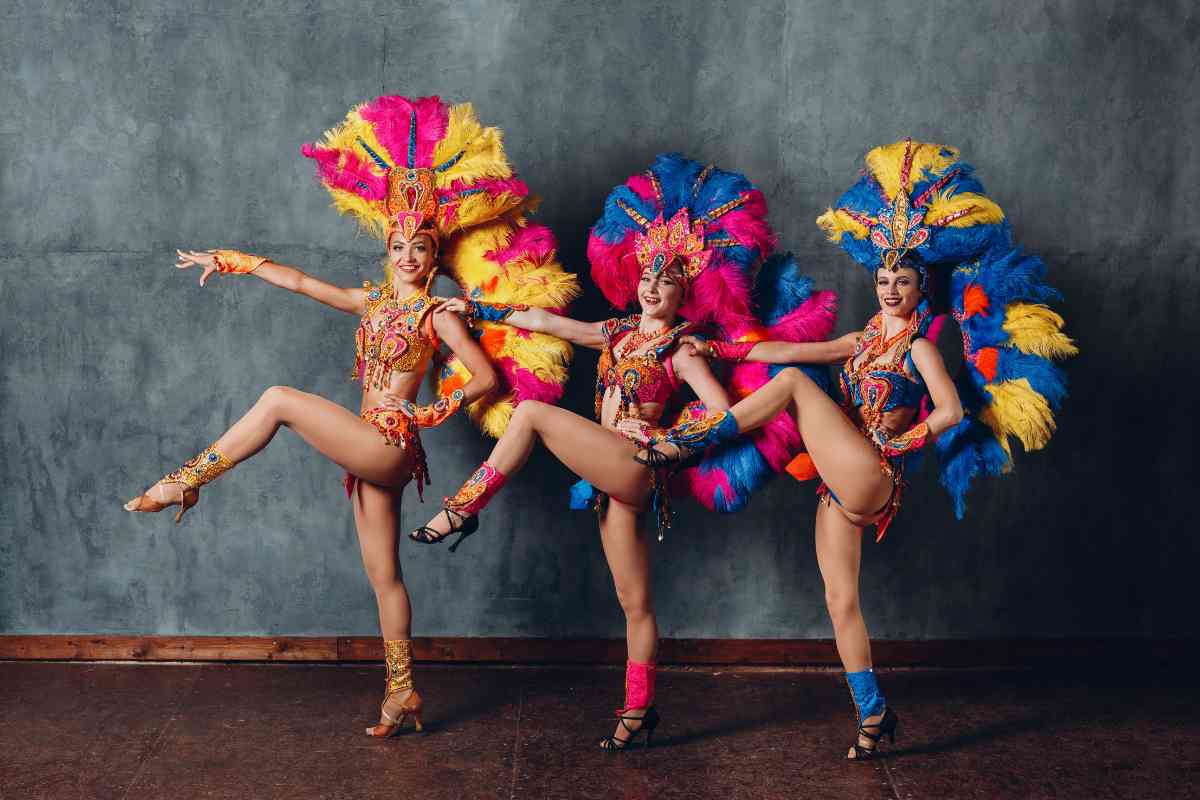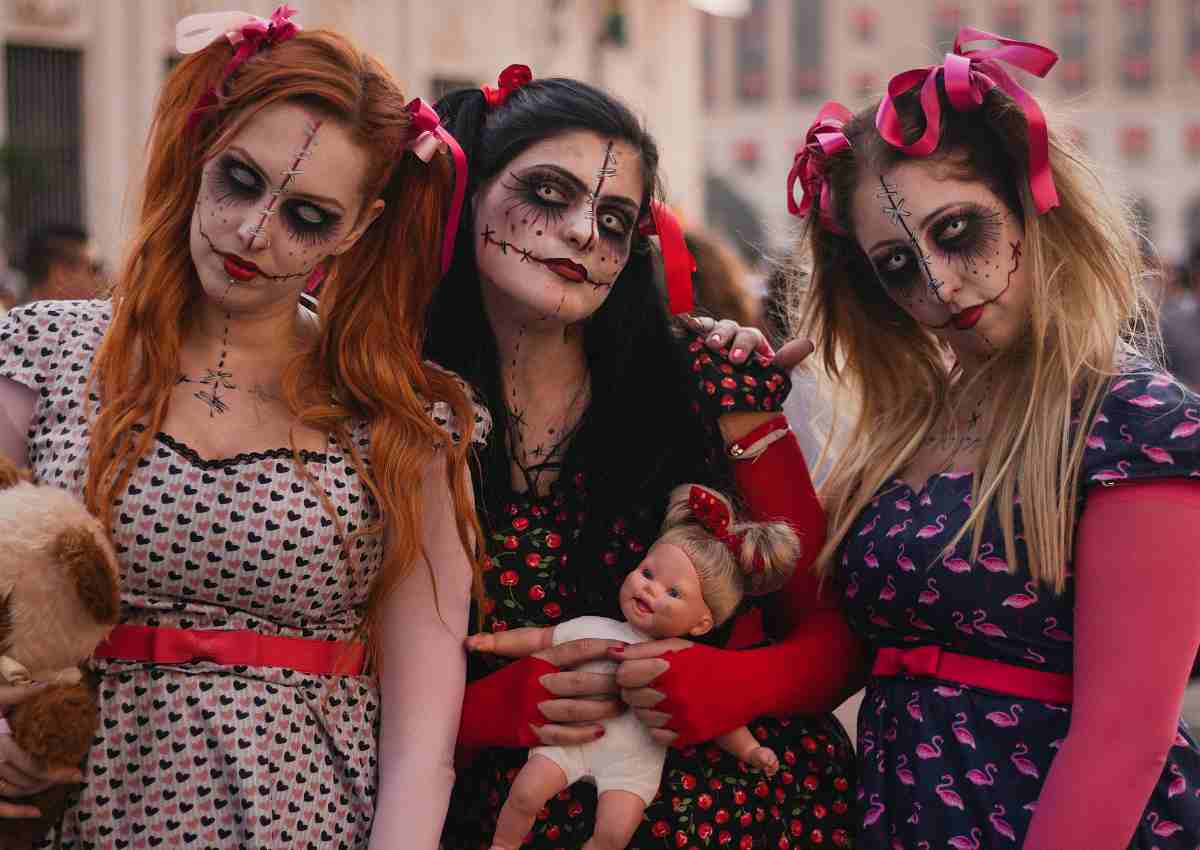Halloween, which is celebrated annually on October 31st, has deep historical roots traced back to ancient Celtic festivals. Originally known as Samhain, it marked the end of the harvest season and the beginning of winter. Over time, the celebration evolved into Halloween, incorporating various cultural influences. In contemporary society, Halloween has become synonymous with costumes, trick-or-treating, haunted houses, and festive gatherings.
The importance of costumes in Halloween celebrations cannot be overstated. Costumes play a pivotal role in the festivities, serving as a means for individuals to express creativity, embrace the spirit of the season, and temporarily transform into characters of their choosing. This tradition of donning costumes is deeply ingrained in Halloween’s essence, allowing people to embody many personas, from the spooky and supernatural to the whimsical and fantastical. Dressing up not only adds an element of fun and excitement to the celebration but also fosters a sense of community as individuals of all ages participate in this collective tradition.

Classic Halloween Costumes
Ghosts and ghouls are quintessential Halloween characters, and the classic ghost costume remains a timeless and easily recognizable staple. Crafted from a simple white sheet with strategically cut-out eye holes, this minimalist approach evokes the traditional image of a spectral figure. The ghost costume captures the essence of Halloween’s spooky origins and provides a versatile option for those seeking a quick and classic disguise.
A variation on the classic ghost costume involves drawing inspiration from classic horror movies, such as the friendly ghost Casper. This playful twist allows individuals to add a touch of pop culture to their ghostly ensemble. These adaptations showcase this iconic Halloween attire’s enduring popularity and adaptability, bridging the gap between the traditional and the contemporary.
Witches and Wizards
- Witches’ and wizards’ costumes are a classic choice for Halloween enthusiasts. These costumes typically feature pointy hats, broomsticks, and capes, capturing the iconic and mystical aesthetic associated with magic and sorcery. The pointed hat, in particular, symbolizes witchcraft, while broomsticks and capes add an enchanting flair to the overall look.
- Popular characters like Hermione Granger or Harry Potter often inspire these costumes. The “Harry Potter” series fans frequently emulate their favorite characters by donning Hogwarts robes, scarves, and house-themed accessories. The widespread appeal of these characters has made witches’ and wizards’ costumes a staple in Halloween celebrations, allowing fans to immerse themselves in the magical world created by J.K. Rowling.
Vampires
- Vampires have long been a go-to costume choice for Halloween, and their allure lies in the combination of elegance and supernatural mystique. The classic vampire costume includes fangs, capes, and pale makeup, creating a hauntingly sophisticated appearance. Using dark, rich colors and flowing fabrics enhances the overall vampiric aesthetic.
- Modern twists on vampire costumes often draw inspiration from popular culture, with characters from “Twilight” or the iconic figure of Count Dracula influencing contemporary vampire attire. These modern adaptations may incorporate romantic elements, adding a layer of complexity to the traditional vampire persona. Individuals can create unique and personalized vampire costumes that resonate with current pop culture themes by infusing new trends and cultural references.
Pop Culture and Movie-Inspired Costumes
Superheroes
- Superhero costumes remain prevalent, with characters from Marvel and DC Comics taking center stage. Iconic figures like Spider-Man and Wonder Woman inspire costumes that showcase strength, agility, and a sense of justice. The use of vibrant colors, logos, and superhero accessories contributes to the authenticity of these costumes.
- The influence of recent superhero movies shapes trends in superhero costumes. Blockbuster hits often spark a surge in popularity for specific characters, leading to a diverse array of superhero costumes each Halloween. Fans eagerly embrace the opportunity to embody their favorite heroes, contributing to the dynamic and ever-evolving landscape of superhero-inspired Halloween attire.
TV Show Characters
- TV show characters offer a wealth of inspiration for Halloween costumes, reflecting the cultural impact of popular series. Shows like “Stranger Things” and “Game of Thrones” have given rise to memorable characters with distinct looks. Emulating these characters involves capturing their unique styles, from Eleven’s iconic buzz cut and outfit to Jon Snow’s rugged and heroic appearance.
- Iconic characters from TV series, such as Eleven or Jon Snow, become focal points for Halloween costume enthusiasts. The attention to detail in replicating these characters’ costumes adds authenticity to the portrayal, allowing fans to pay homage to their beloved shows while participating in the Halloween festivities.
Movie Monsters
- Classic movie monsters like Frankenstein and mummies provide a nostalgic and eerie option for Halloween costumes. These timeless characters are often characterized by distinctive features, like Frankenstein’s bolts or a mummy’s bandages. The use of makeup and accessories contributes to the overall spookiness of these costumes.
- Modern movie monsters from horror films offer a contemporary twist on classic Halloween attire. Characters from recent horror movies bring fresh scares to the costume scene, showcasing the ever-evolving nature of Halloween fashion. The creativity in replicating these modern monsters allows individuals to explore Halloween celebrations’ darker and more chilling side.
Trendy and Creative Costumes
DIY Costumes
- DIY or Do-It-Yourself costumes have gained popularity for their unique and personalized touch. These costumes involve creating ensembles from scratch or repurposing household items. By utilizing everyday materials, individuals can craft imaginative and budget-friendly costumes. The emphasis is on creativity and originality, allowing people to showcase their crafting skills and ingenuity. DIY costumes offer a sense of accomplishment, as individuals take pride in wearing something they’ve designed.
- The beauty of DIY costumes lies in their limitless possibilities. Whether transforming cardboard boxes into robots or using old clothes to create a scarecrow, the DIY approach encourages resourcefulness and out-of-the-box thinking. These costumes contribute to a more sustainable and eco-friendly Halloween and showcase the wearer’s commitment to a unique and handmade celebration.
Group Costumes
- Group costumes bring an added layer of fun and coordination to Halloween celebrations. Friends or family members can choose a common theme and dress in complementary outfits, creating a visually striking and cohesive group appearance. This approach fosters a sense of unity and camaraderie as individuals collaborate to achieve a shared look.
- Examples of popular group costumes include The Addams Family, the Avengers, and the Scooby-Doo gang. Coordinating outfits based on well-known groups or ensembles from pop culture allows participants to embody beloved characters collectively. Group costumes often become the highlight of Halloween parties, drawing attention to their creativity and the shared enthusiasm of the participants.
Punny Costumes
- Punny costumes add a playful and humorous element to Halloween attire, relying on wordplay and clever ideas. These costumes incorporate puns or play-on words into the overall look, creating a funny and often lighthearted effect. Punny costumes showcase the wearer’s wit and add an entertaining twist to traditional Halloween themes.
- Examples of punny costumes include “Smartie Pants” (adorned with Smarties candy), “Cereal Killer” (with mini cereal boxes and fake weapons), or “Fork in the Road” (featuring a fork attached to a street sign). These costumes generate laughs and spark conversations and interactions at Halloween gatherings. Punny costumes highlight the versatility of Halloween attire, demonstrating that creativity knows no bounds in the pursuit of festive fun.
Cultural and Historical Costumes
Traditional Costumes
- Traditional costumes that reflect cultural heritage are a meaningful and enriching choice for Halloween celebrations. These costumes draw inspiration from diverse cultures, highlighting the richness of global traditions. Whether donning a kimono, a saree, or traditional African attire, individuals can use Halloween to showcase and celebrate their cultural roots. Emphasizing traditional costumes contributes to a more inclusive and diverse representation within the broader Halloween community.
- The emphasis on diversity and inclusivity in traditional costumes extends beyond individual expressions to promote a collective appreciation for the world’s cultures. Halloween becomes a platform for cultural exchange and understanding, fostering a sense of unity among people of different backgrounds. Traditional costumes celebrate heritage and contribute to a more global and interconnected celebration.
Historical Figures
- Costumes representing famous historical personalities offer a unique and educational dimension to Halloween attire. Participants can choose to embody iconic figures from history, such as historical leaders, inventors, or cultural luminaries. This choice allows for a deeper exploration of the past and provides an opportunity to share knowledge about influential individuals with others.
- Historical costumes are informative, encouraging wearers to delve into the lives and contributions of the figures they portray. This educational element adds depth to Halloween celebrations, fostering an appreciation for history and promoting a shared understanding of the world’s collective heritage. Historical figure costumes serve as a bridge between the present and the past, making Halloween a time for reflection and learning.
Conclusion
In summary, Halloween costumes span various categories, from classic and movie-inspired to trendy and culturally significant choices. Ghosts and ghouls, witches and wizards, vampires, superheroes, TV show characters, and movie monsters represent the broad spectrum of Halloween attire, catering to various interests and preferences.
The landscape of Halloween costumes continually evolves, influenced by pop culture, current events, and individual creativity. The inclusion of diverse and cultural costumes reflects a growing awareness of the importance of representation and inclusivity within the Halloween tradition. Embracing evolving trends ensures that Halloween remains a dynamic and engaging celebration for people of all backgrounds.
At its core, Halloween is a celebration of creativity and personal expression. Whether through DIY costumes, group ensembles, punny outfits, or cultural representations, individuals use Halloween as a canvas to express their imagination and individuality. This celebration of creativity fosters a sense of community and shared joy, making Halloween a time when people can come together to appreciate the diversity of human expression.



